If you want to learn more about how to build a park bench, we recommend you to pay attention to the instructions described in the article. Select the right garden bench plans for your needs before starting the actual construction project. There are so many designs and plans to choose from, that we really recommend you to browse through the related plans before buying the materials and starting the assembly. Work with attention and invest in high quality materials.
If you want to get the job done in a professional manner, we recommend you to plan everything with attention, as to prevent costly mistakes and to build a professional bench. Invest in high quality materials, such as cedar, pine or redwood, as the bench will be exposed to all kinds of weather. Apply a few coats of paint over the components, to enhance their appearance and to protect them from bad weather.
RELATED PLANS:
Building a park bench
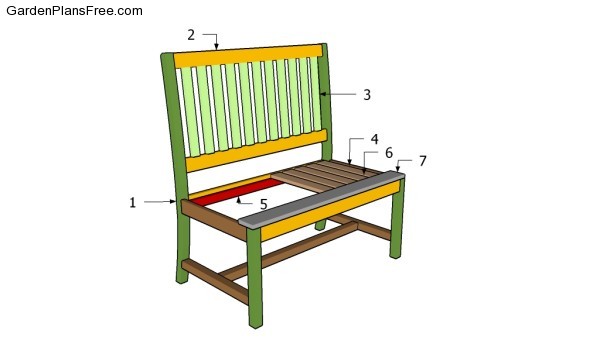
Building a park bench
Materials
- 1 – 2 pieces of 2×4 lumber – 42”, 2 pieces of 2×2 lumber – 17″ LEGS
- 2 – 4 pieces of 1×3 lumber – 36″ FRAME
- 3 – 11 pieces of 1×2 lumber – 15 1/2″ BACKREST
- 4 – 2 pieces of 2×2 lumber – 19 1/4″ long, 1 piece – 36″, 2 pieces of 1×3 lumber – 18″ BRACES
- 5 – 2 pieces of 1×2 lumber – 36″ CLEATS
- 6 – 11 pieces of 1×3 lumber – 19 1/2″ SEAT SUPPORTS
- 7 – 6 pieces of 1×4 lumber – 39″ SEAT SLATS
- 1 piece of 2×4 lumber – 8 ft
- 1 piece of 2×2 lumber – 10 ft
- 4 pieces of 1×3 lumber – 8 ft
- 3 piece of 1×2 lumber – 8 ft
- 3 pieces of 1×4 lumber – 8 ft
- 200 pieces of 2 1/2″ screws
- 50 pieces of 1 1/4″ screws
- wood stain
- wood glue
Tools
- Hammer, Tape measure, Carpentry square
- Miter saw, Drill machinery, Screwdriver, Sander, Router
- Safety Gloves, Safety Glasses, Respiratory Mask
Time
- One day
How to build a park bench
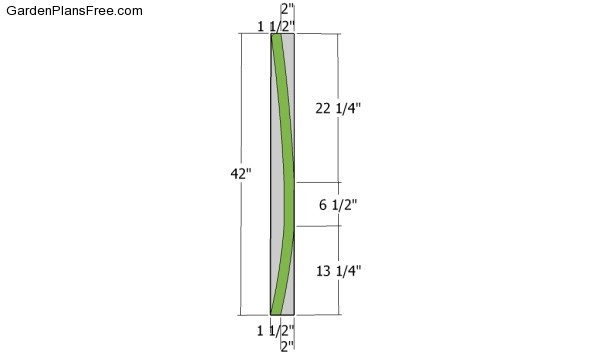
Building the legs of the bench
The first step of the woodworking project is to build the legs for the bench. In order to get the job done in a professional manner, we recommend you to mark the cut lines on the 2×4 slats and to get the job done in a nice jigsaw. Smooth the edges with sandpaper and remove the residues using a cleaner.
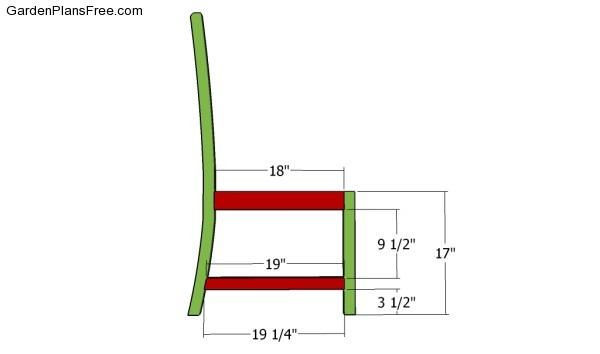
Building the sides of the bench
Cut the braces bottom braces out of 2×2 lumber and the top braces out of 1×3 lumber. Make sure you fit them properly between the front and the back legs and lock them into place 1 1/4″ galvanized screws. Don’t forget to drill pocket holes at both ends of the braces before locking them into place. Add waterproof glue to the joints and make sure corners are right-angled.
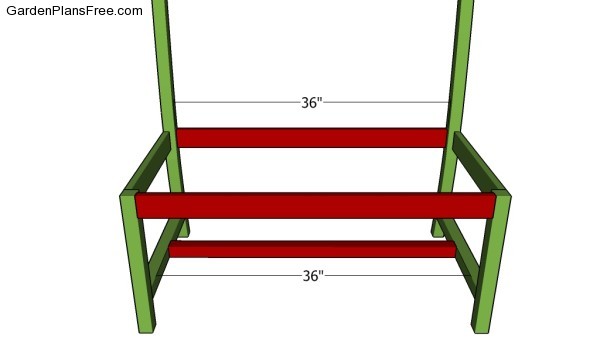
Building the frame of the bench
Continue the garden project by locking the sides of the bench together. Drill pocket holes at both ends of the components and lock them into place using 1 1/4″ screws. Add waterproof glue to the joints and check if the corners are square.
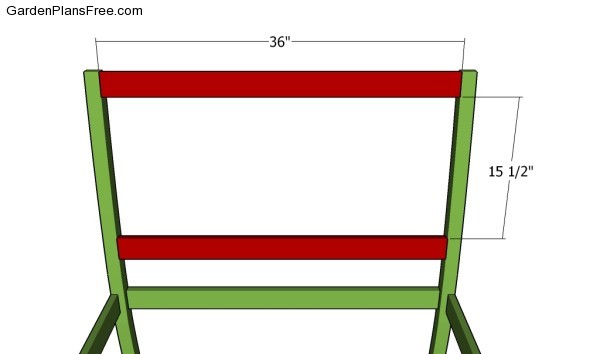
Fitting the back rest frame
Attach the 1×3 supports to the back legs in order to create the backrest. Work with attention, making sure the structure is rigid.

Attaching the back rest slats
Cut the 1×2 supports at the right size and fit them into place. Drill pocket holes at both ends of the slats and secure them to the frame by using 1 1/4″ galvanized screws. Place the supports equally-spaced and lock them into place tightly.
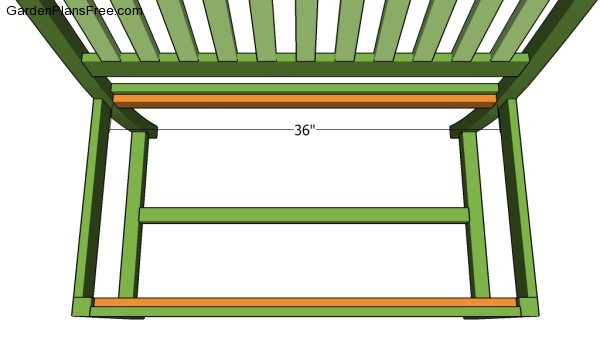
Fitting the cleats
Fit the 1×2 cleats to the interior frame of the bench. Use a spirit level to make sure the cleats are horizontal and lock them to the frame using 1 1/4″ screws. Leave no gaps between the components and add waterproof glue to the joints.
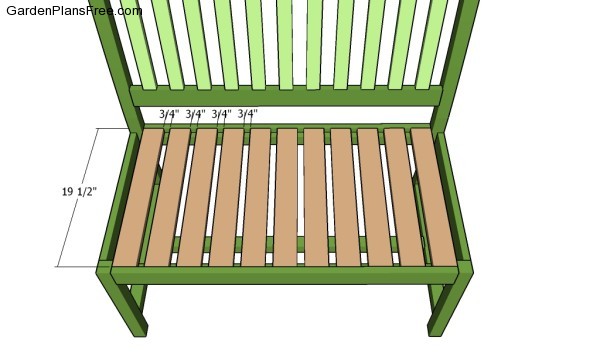
Fitting the support slats
Attach the 1×3 slats to the cleats and secure them into place by using 1 1/4″ screws. Pre-drill the slats before inserting the screws to prevent the wood from splitting.
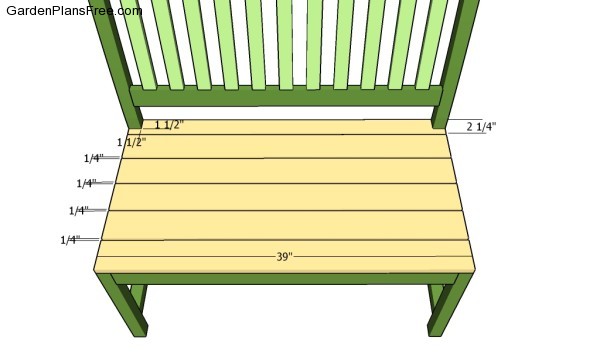
Fitting the seat slats
One of the last steps of the project is to attach the 1×4 slats to the seat of the bench. Align the slats at both ends and lock them into place by using 1 1/4″ screws. Make sure you pre-drill the slats before inserting the screws.
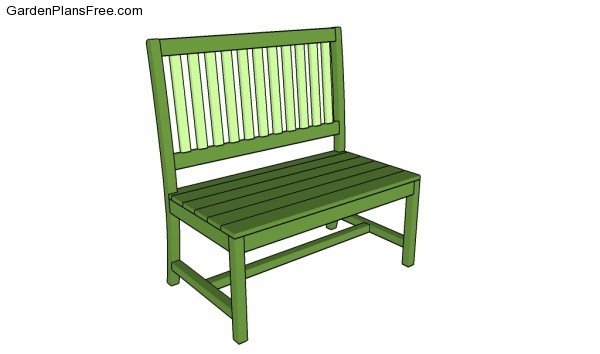
How to build a park bench
Last but not least, you should take care of the finishing touches. Therefore, we recommend you to check if the components are locked into place properly and structure is rigid enough for your garden. Make sure there are no protruding screws or sharp edges.
PRO TIP: Fill the holes with a good wood filler and smooth the surface with medium-grit sandpaper. Apply several coats of paint or stain over the components, in order to protect them from decay. Check out the rest of the project to learn more about building garden projects.
This diy project was about how to build a park bench. If you have enjoyed the free project, we recommend you to LIKE and SHARE it with your friends, by using the social media widgets.

